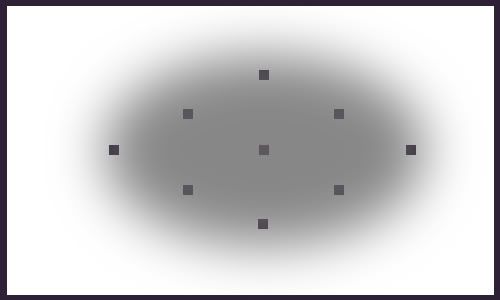Shooting in manual full mode will always be the best way to get the most creative shot since you are in control of everything. But there are instances when you just do not have the time to fiddle around with the proper combination of ISO, aperture and shutter speed. On these occasions, you have to rely on your camera’s metering system to get you the correct exposure.
All light meters, including in-camera meters, are designed to give you a reading that will make the subject have the same tone as a 15% gray card. Manufacturers designed meters to give you an average reading on an average or neutral subject. This is very important to keep in mind when relying on your camera’s different metering modes.
There are also different types of exposure modes in modern day DSLRs that are called different names by different brands. For the purpose of this article, we will be concentrating on the three main exposure modes: evaluative/matrix, center-weighted, and spot metering.
EVALUATIVE / MATRIX MODE
Before the advent of digital cameras, pro photographers relied on light meters to get a scene’s proper exposure. What they do is meter for the scene’s highlights, midtones and shadows and get the average of the different readings. That’s a lot of work to get just one shot.
Your camera’s evaluative (Canon) or matrix (Nikon) mode does that same thing. It samples different areas of the scene and arrives at the average reading. The total number of areas or zones that are metered is dependent on how advanced your camera is. The Canon 400D samples 35 zones in a scene while the 1Ds Mark III samples 63 zones. It goes without saying that the more zones sampled, the more accurate the exposure will be.
CENTER-WEIGHTED
Center-weighted also samples the entire scene but the difference is that it puts more importance to the zones near the center of the scene. On most brands, 75% of the total exposure is taken from the center of the frame and 25% to the outer parts.

This exposure mode is best used for portraits where the face of the subject is occupies a large part of the viewfinder. This is because the average skin tone is pretty close to a 15% gray card which should get you a pretty precise reading.
SPOT METER
This setting gives you the most precise control among the different exposure modes. In this mode, the camera only meters around 3% of the entire scene. The reading is usually taken at the center focus point but other cameras give you the option to change this.
This mode is best for scenes that have very bright and dark areas which can easily fool your camera. What you do is look for an area that is somewhere in the middle of the brightest and darkest parts and use the spot metering mode to get a reading off that. The spot meter is also useful in shooting silhouettes. You simply meter for the bright background then everything that is darker than that will automatically turn into silhouettes.
0 komentar:
Post a Comment